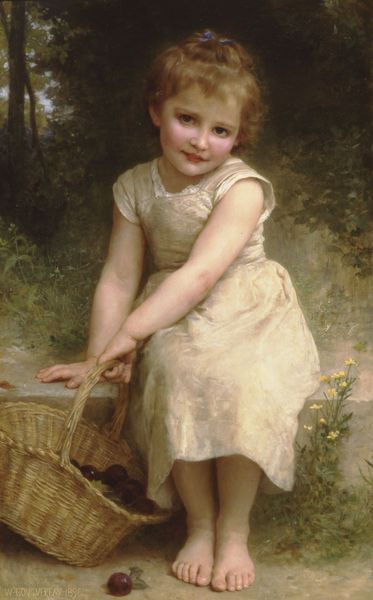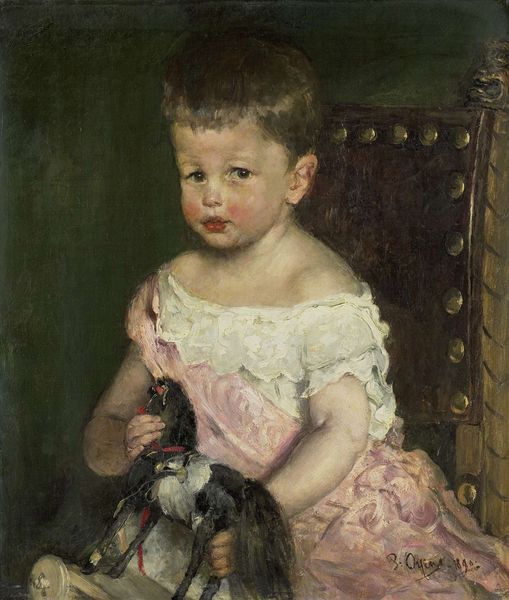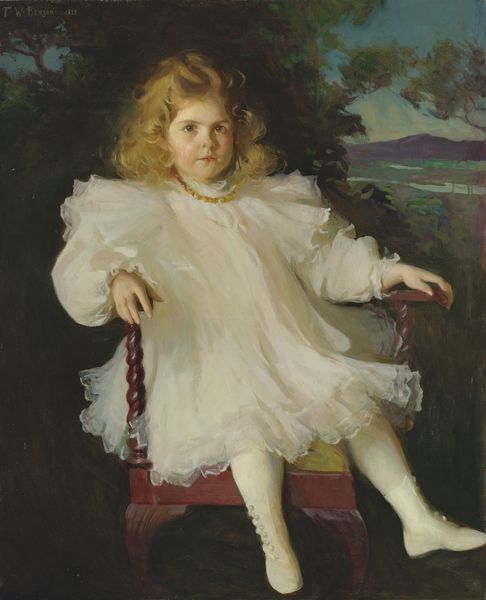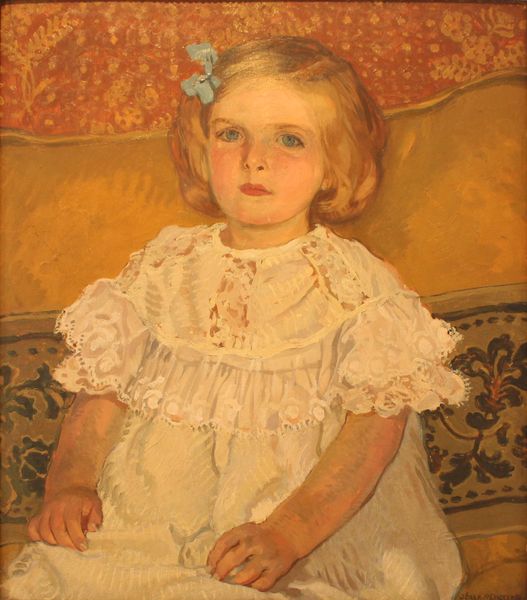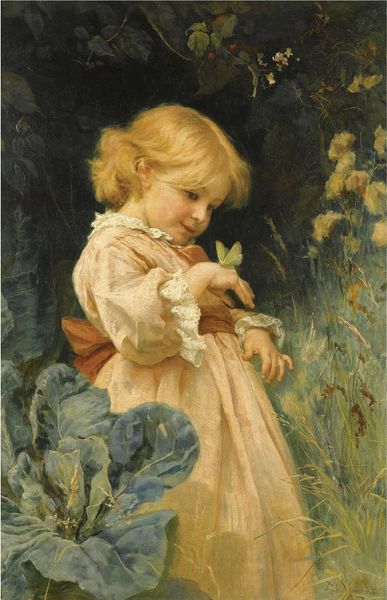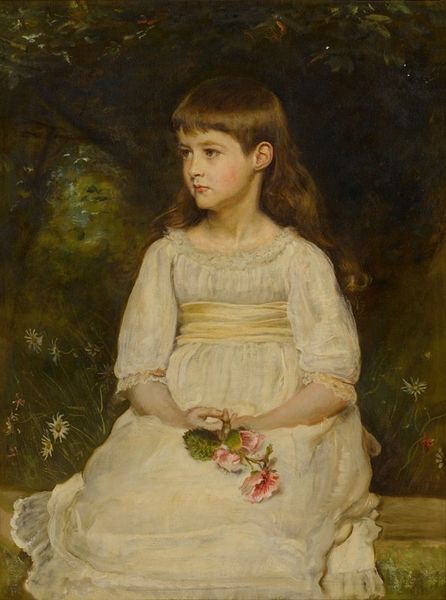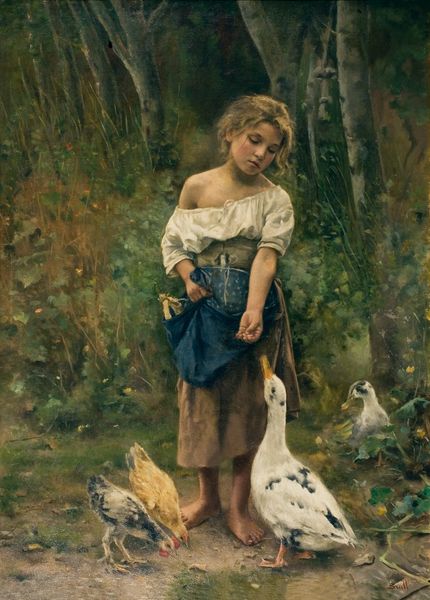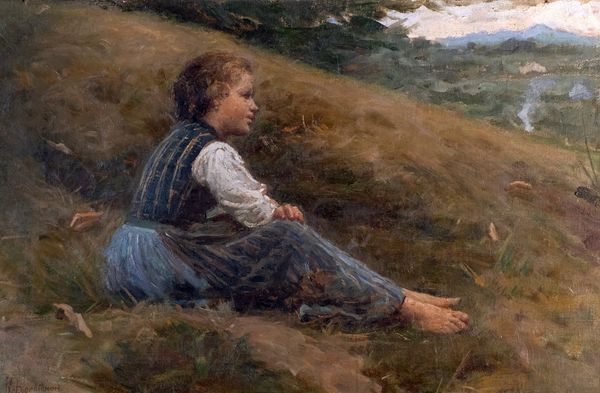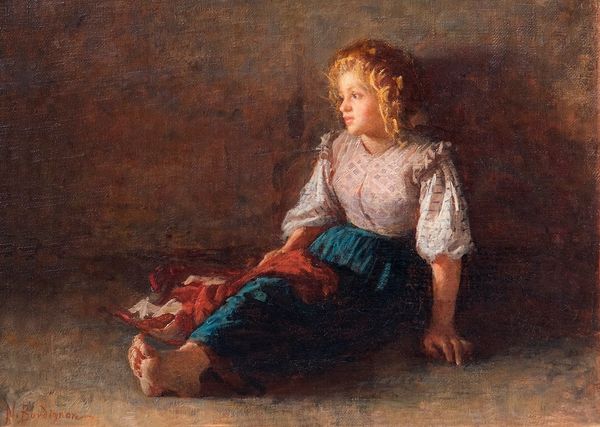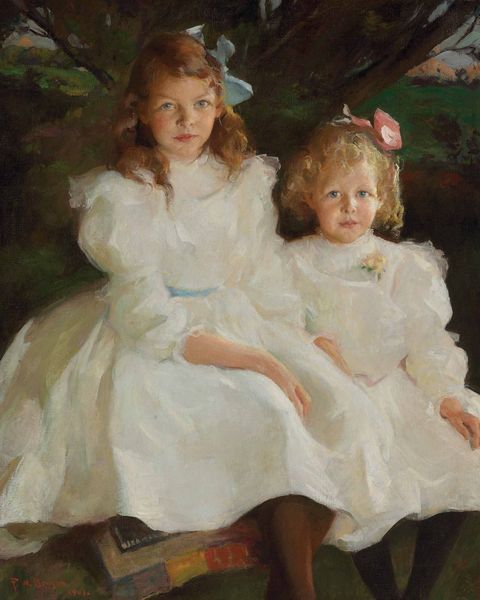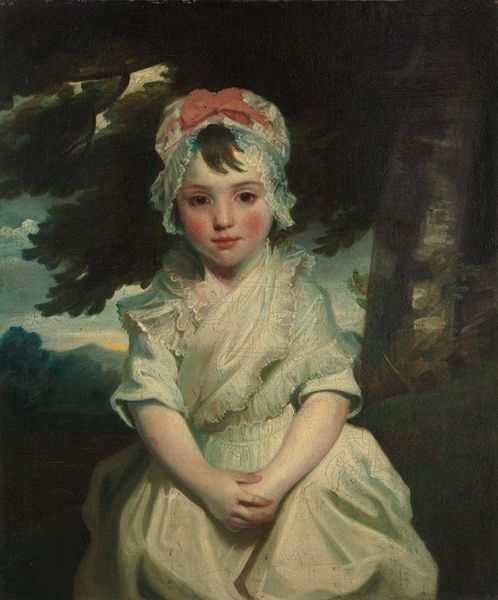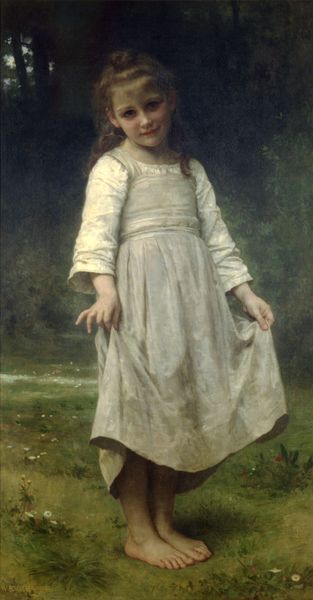
Copyright: Public domain
Editor: This is Albrecht Anker's "Portrait of Emilie Weiss (with soft toy)" from 1868, painted in oil. I find the composition so interesting - the formality of a portrait combined with this very intimate, domestic scene of a child and her toy. What do you see when you look at this piece? Curator: From a formal perspective, consider the interplay of textures. Anker meticulously renders the plush sheep, contrasting its softness against the crisp fabric of Emilie’s dress. Notice the chromatic scale; it's quite restricted. Anker's palette focuses predominantly on whites, reds, and greens, contributing to a sense of unity within the composition. Editor: Yes, the texture of the sheep is remarkable. The palette, though restrained, brings an order to the variety of textures – from the sheep’s fleece to the blanket. Do you think the contrast in texture between the toy and child has a certain… purpose? Curator: Indeed. If we approach this semiotically, the contrast serves as a signifier. The soft toy, a symbol of childhood innocence, is juxtaposed against Emilie's developing physical form and the more structured elements of her clothing. Note how the lines of the red blanket push against the central vertical, framing Emilie’s childhood. It is a deliberate arrangement intended to communicate specific ideas about childhood itself. Editor: That's insightful. I hadn't considered the relationship between the objects in that symbolic way. The blanket really frames the child’s state, providing a structured setting in direct contrast to her softness. Curator: Precisely. Observing how a simple painting opens a spectrum of meaning from its most rudimentary forms reinforces our appreciation of the work, don't you agree? Editor: Absolutely. I see now that formalism offers a potent strategy for deciphering the essence of artworks by analysing the construction of images in and of themselves.
Comments
No comments
Be the first to comment and join the conversation on the ultimate creative platform.
